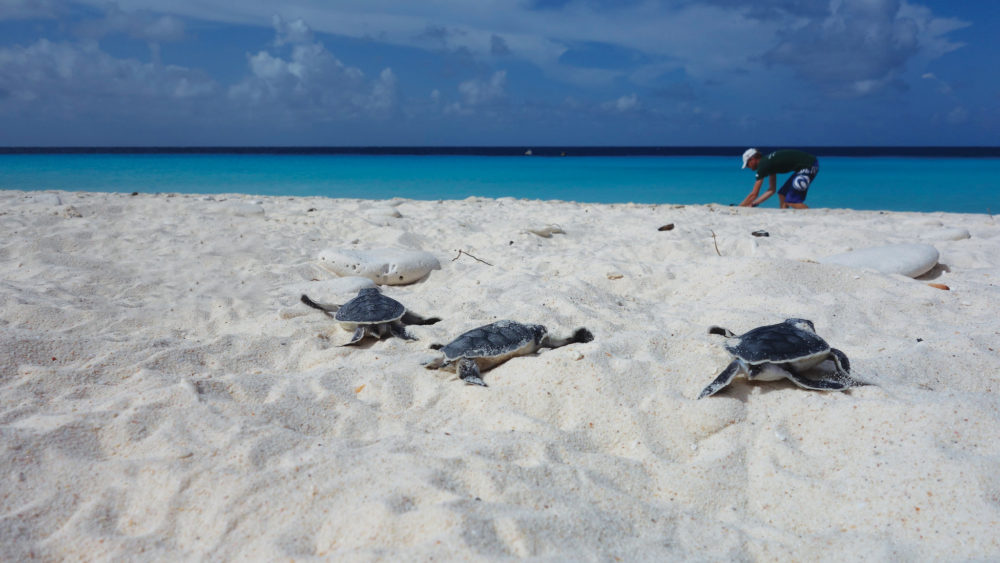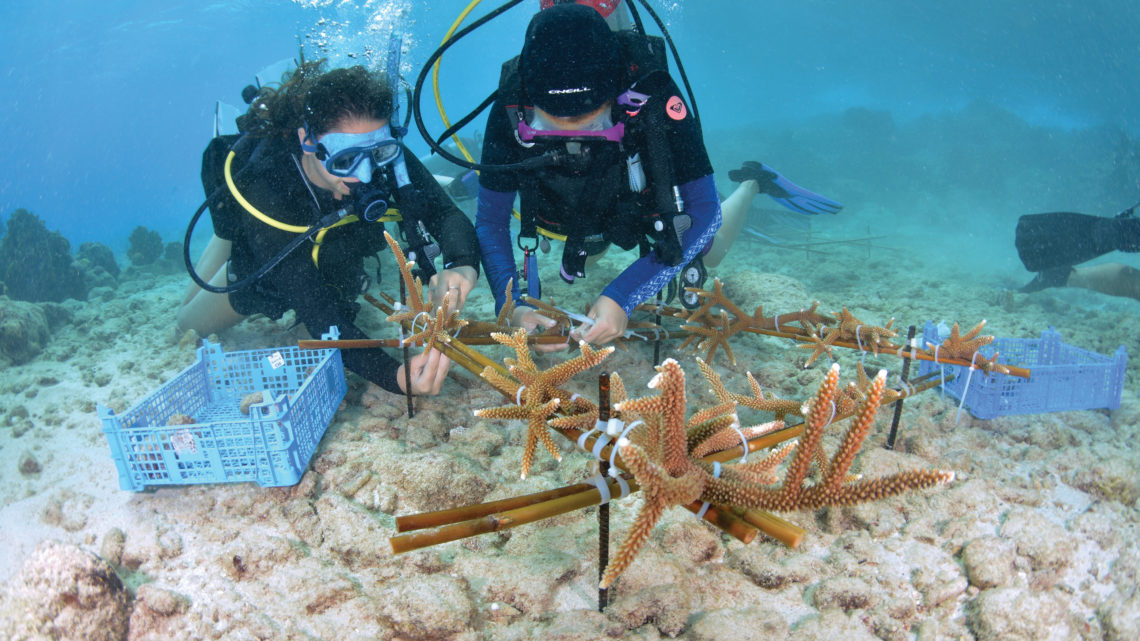Sustainable Tourism in Action
While Curaçaoan reefs are still in relatively good shape and show the potential to once again grow to their former glory, everyone on the island, locals and visitors alike, should recognize the delicate nature of these systems and work to minimize their impact on what is considered one of the most beautiful ecosystems on the planet. A common-sense approach is often enough.
by Bryan Horne, Dive Curaçao
A healthy reef provides numerous benefits to small islands like Curaçao: it supports all sorts of activities such as diving, snorkeling, fishing and swimming. It also protects the shore from storm events, generates the sand required to form natural beaches on the island, and ensures good water quality so all the above-mentioned activities can take place. Economists have calculated that coral reefs provide goods and services worth about $375 billion worldwide each year – a staggering figure for an ecosystem which covers less than one percent of the earth’s surface.
The observation that coral reefs are declining worldwide has resulted in a myriad of protective measures to reduce the effects of land-based pollutants and to curb over-harvesting. These efforts enhance coral reefs’ ability to withstand the detrimental effects of climate change which generally cannot be dealt with at a local level. In the Caribbean, the reefs of Curaçao stand a good chance of surviving once such protective measures are employed locally. This is currently ongoing, and several organizations, such as the Curaçao Dive Task Force, the Coral Restoration Foundation Curaçao and Sea Turtle Conservation Curaçao to name a few, work with other stakeholders to achieve this goal.
For many islands, the realization of the need to act has come too late, and reef systems have collapsed. The result has been losses in tourism and fishing revenue, floods, and deteriorated water quality which has led to waterborne diseases that affect human health. None of that has happened on Curaçao, and as such, the island’s reefs remain amongst the best in the Caribbean region.
Coral Restoration Outplanting Site
The Coral Restoration Foundation Curaçao chose Director’s Bay as an outplanting location because it offers much-needed protection for the coral structures and a regular flow of nutrients brought in by the southeasterly currents. CRF Curaçao has successfully outplanted over 6000 corals at various popular dive sites along Curaçao’s southeastern coastline which includes several outplanting structures at Director’s Bay. The Coral Restoration Foundation Curaçao, originally founded in May 2015 by Ocean Encounters Diving, has branched out and expanded the nurseries with the assistance of Scubaçao, a CRF Curaçao affiliate member. It also currently maintains 50 coral trees across the island. These coral trees currently located at LionsDive Beach Resort, Baoase Luxury Resort and Avila Beach Resort grow fragments of critically endangered coral species. Once these fragments are mature enough, they are outplanted to different sites around Curaçao. The outplanted coral clusters not only improve the health of the reefs but also increase fish populations in the area. In doing so, they can now provide triple the number of coral fragments available to be outplanted back onto Curaçao’s fringing reefs.
According to Pol Bosch of CRF Curaçao, “The significance of the Curaçao Reef Restoration Program is that together as a community here on Curaçao, we will be restoring our shallow water reef system while educating our youth about the importance of protecting and preserving our natural ecosystem.” Bosch adds, “I believe programs like this help solidify a natural sustainability for future generations.”

Project AWARE • Adopt A Dive Site
“The Adopt-a-Dive Site initiative is a community-driven effort in which individual divers and dive centers join together for a greater cause of keeping Curaçao’s reefs clean. Dive Against Debris is not just a PADI specialty, it is a lifestyle in which divers collectively work together to eliminate debris from each of our adopt-a-dive sites which in turn creates an impact on a large scale. I am honored to dive with the purpose of helping keep Curaçao’s reefs clean”, says Ivana Stampeggi, PADI Master Instructor at Blue Bay Dive and Watersports.
The Curaçao Hospitality and Tourism Association’s (CHATA) Dive Task Force in collaboration with the Project AWARE Foundation is committed to the Adopt a Dive Site™ initiative. With 14 adopted reefs around Curaçao, this group has pledged to conduct monthly Dive Against Debris™ beach and dive site cleanups. Today, this program has grown to fourteen diving operations that are investing in Curaçao’s future. Now, Dive Against Debris™ events span from Director’s Bay to Playa Kalki in Westpunt.
“Scuba divers have a deep connection to the ocean and a desire to want to protect it. We love to mix the passion for ocean adventure with conservation,” says Project AWARE, a global movement for ocean protection.

Sea Turtle Conservation Curaçao (STCC)
Sea turtles are a long-lived species that reach sexual maturity after 20-30 years of age and migrate great distances at different stages of their lives. These unique life history features necessitate international cooperation and long-term monitoring programs to best understand and safeguard these endangered species.
Once amazingly abundant, Caribbean sea turtles have seen a rapid decline in numbers since the time of European expansion in the Americas. Hawksbills, as an example, have plunged 99.7% from 11 million to 30,000. Curaçao is very fortunate that both green turtles and hawksbills return annually to nest at a variety of beaches across the island including Klein Curaçao and Playa Kalki.
The main objectives of STCC Foundation revolve around their mandated «3 Pillars of Success» which incorporate research, conservation and education. The goal of these 3 fundamental pillars is to influence and support local as well as international decision-making to achieve effective sea turtle conservation, thereby ensuring sustainability. Additionally, STCC works to increase local support for sea turtle and marine conservation through public awareness activities and leads by example through organizing beach cleanups.













